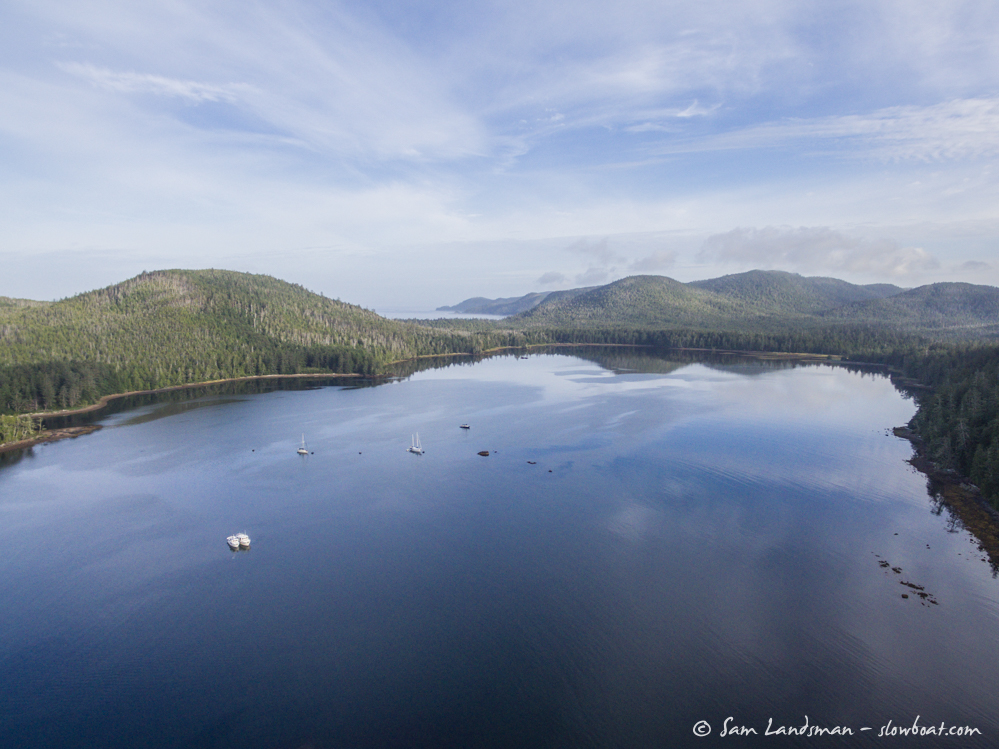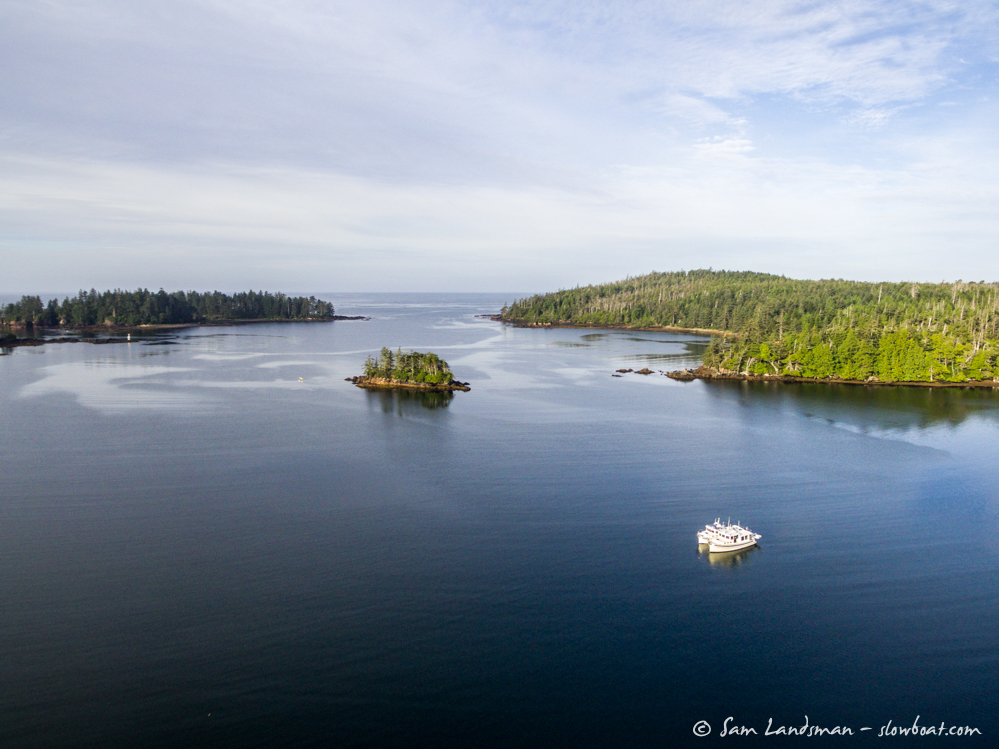For the last several days, we’ve been closely monitoring the weather forecasts, looking for a window to cross Queen Charlotte Sound and round Cape Scott to the west side of Vancouver Island. Environment Canada had been calling for 20-30 knot southerly winds today, diminishing to 5-15 knots tomorrow, then increasing to 15-25 the next day. But yesterday afternoon they revised the forecast. Suddenly today looked decent, with 15-25 knot winds diminishing to light in the morning.
In Rock Inlet, things didn’t look promising. Even inside the anchorage gusts buffeted the boat. The Cape Scott lightstation, at the northwest tip of Vancouver Island, was reported 25-knot winds and 6-foot seas at 7:30 a.m. As we exited Rock Inlet and turned south in Fitz Hugh Sound, rain limited visibility to a mile and 15 knots of wind stirred up steep, closely spaced chop.
The forecast still called for calming conditions, but the calming seemed to be coming later than predicted. Every hour we got new weather reports from the West Sea Otter and East Delwood weather buoys. Both showed moderate winds but bigger-than-expected seas. Every three hours we got updated lightstation reports. By 10:30 a.m., Cape Scott was reporting just three knots of wind and 3-foot seas. Much better!
Conditions didn’t feel like they were calming at the south end of Fitz Hugh Sound, though. The wind was still blowing and a couple foot chop atop six foot swells wasn’t particularly fun. At least the conditions were on the bow, causing the boats to pitch rather than roll.
A few hours into Queen Charlotte Sound, conditions began improving. Quickly, too. Soon the wind was gone, then the chop. The swell didn’t get smaller but it did get lazier. The motion onboard shifted from a rapid up-and-down to a gentle rise and fall. The rain stopped and the sky brightened.
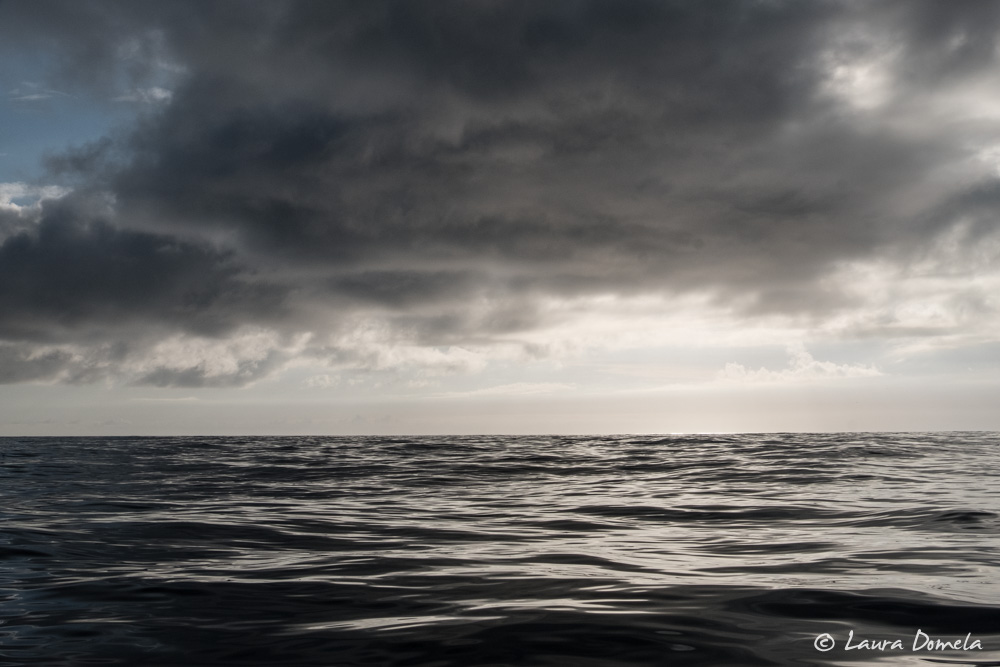
By the time we made Cape Scott, about 6:00 p.m., conditions were delightful. We motored a few miles further to Sea Otter Cove, the first good anchorage south of Cape Scott. The entrance is a little intimidating: a narrow, rapidly shallowing channel leads between big rock piles. In protected waters this wouldn’t be a big deal, but here the ocean swells crash violently on the rocks just outside the channel. Every few seconds, spray explodes as a swell hits a rock. Huge logs are visible high ashore, driven there by storms. There’s no room for navigational error.

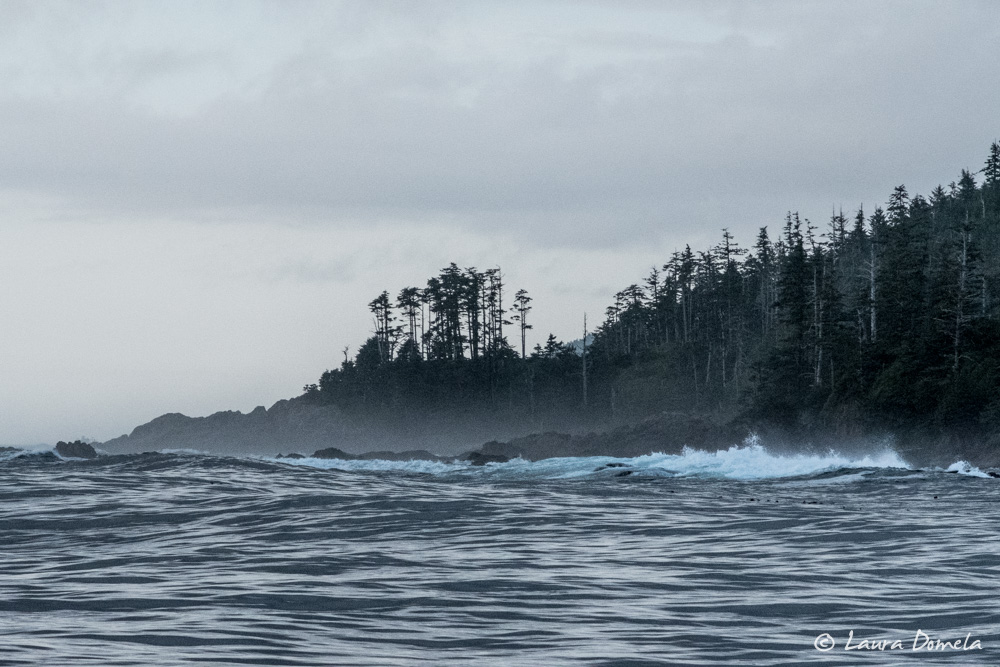
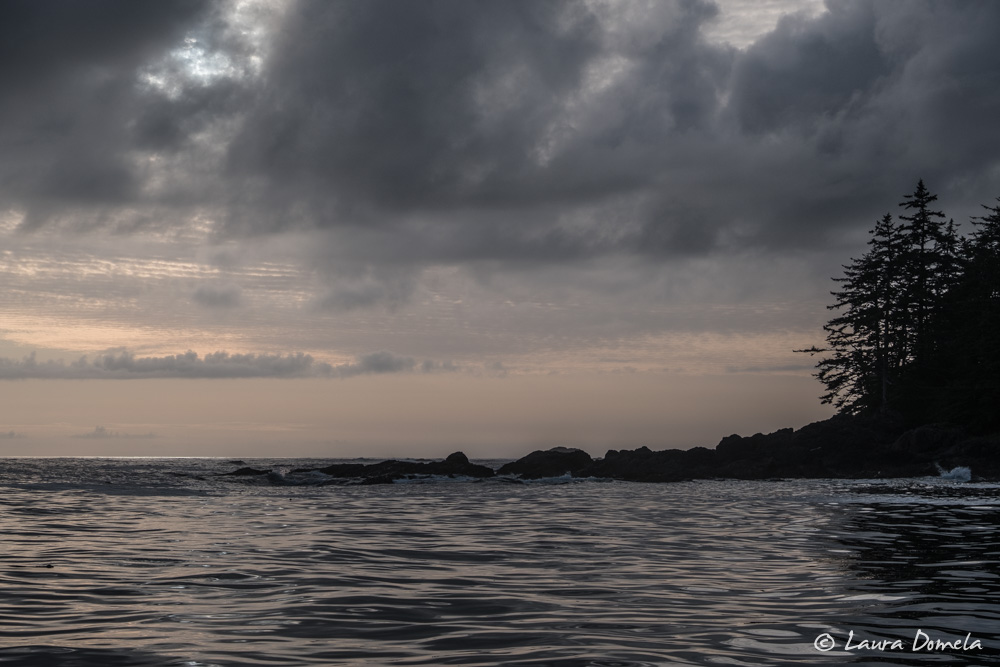
Inside we found other boats! Four sailboats, the most boats we’ve seen in an anchorage since…well, it’s been a long time… Four huge mooring buoys are available, but it looked like they might damage small boats like ours, so we opted to anchor. Sea Otter Cove is super shallow for Pacific Northwest anchorages, maybe 6-10 feet at zero tide. As far as we can remember this is the shallowest water we’ve ever anchored in. So shallow that as we lowered the anchor we inadvertently paid out way too much rode because we weren’t used to how quickly 60 feet spools out of the windlass!
Sea Otter Cove is a beautiful spot. The swells crashing ashore are always audible but barely felt inside. Big, tree covered hills climb around the anchorage, reportedly with good hiking. It feels like you’re out there.

Today was a long day, nearly 12 hours and 84 nautical miles. But now we’re on the west coast of Vancouver Island, where we’ll linger for the next three weeks or so, exploring the sounds and inlets along the way.
Why the west side of Vancouver Island? In short, to travel in more remote areas and see new places…
Vancouver Island is huge, stretching some 300 miles from the Strait of Juan de Fuca at the south to Queen Charlotte Sound at the north. To its east, the inside waters offer some of the best cruising in the world—places like Princess Louisa Inlet, Desolation Sound, and the Broughton Archipelago. These areas are all protected from the Pacific Ocean by Vancouver Island, so their waters are relatively calm. That’s not to say there aren’t challenges—Johnstone Strait and the Strait of Georgia can be ferocious, but there aren’t ocean swells and thousands of miles of fetch.
The west side of Vancouver Island is a whole different animal. Five sounds lie along its coast, each with numerous anchorages, a few settlements, and lots of remote shoreline. Between these sounds, though, boats must traverse open ocean. Looking west from the mouth of any of these sounds, there’s literally no land for thousands of miles. Swells roll in unabated, endlessly pounding the shore. These swells create sea caves and sandy beaches, which we don’t see much of on the inside.
The swells can also be uncomfortable, sometimes even dangerous. A boat driven ashore by the swell is quickly reduced to splinters of fiberglass. On the west side of Vancouver Island, services are relatively scarce. Sheltered anchorages are further apart. Weather is more hazardous.
The challenges are part of the appeal. The natural beauty, solitude, and remoteness are the reward. Stay tuned.


